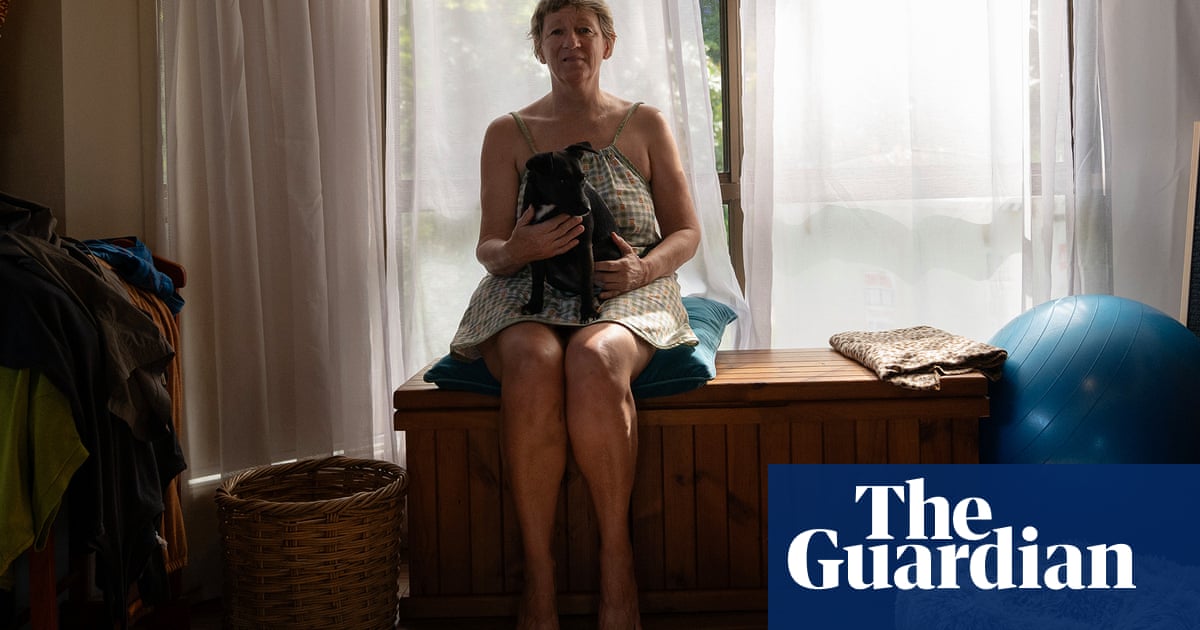In three weeks Tracy Adams starts chemotherapy for bowel cancer. She will also be evicted from her home.
The 63-year-old has been living in herQueenslandrental for five years and, despite her landlords knowing she has just been diagnosed with cancer, they have told her to go.
“A few weeks ago they gave me basically a month’s notice to leave because they said they think they’ll have a better chance of selling the place if it’s vacant,” Adams says.
“At the same time, I also got a diagnosis of bowel cancer. I have to be out of here by the 14th of May, which is also the first week I start chemo and radiation.
“I will be homeless. At the moment I am trying to sell everything I own.”
The Council on the Ageing, a peak charity representing Australians aged over 50, is calling on major parties to commit to more affordable housing for elderly renters – particularly women, who are disproportionately experiencing homelessness.
Advocates warn the number of elderly women living in poverty will keep rising dramatically unless the federal government helps more.
Adams lives in Maleny, Queensland. She has a PhD and trained as an environmental scientist. But with a chronic illness, she can only work a few days a week. Complicating things further, she split from her partner and became a single parent to a child with high needs.
Sign up for the Afternoon Update: Election 2025 email newsletter
“I’ve mostly been only able to work part-time, so barely have any savings,” she says.
Adams is on the disability support pension and works one day a week. She has $30,000 in super – but both these factors mean she has been rejected from social housing, despite applying twice.
“I’ve been turned away, [with them] saying I’m not disabled enough because their waitlists are so big,” she says.
She pays $300 a week in rent – 60% of her income. There are few rentals in the area.
Desperate, her friend launched an online fundraiser to buy her a tent or, ideally, a camper van to live in.
“I’ve noticed that the people who are homeless, who have camper vans, they do a hell of a lot better than the ones who are just in an ordinary car or in a tent,” she says.
Last year research from the University of New South Wales found a strong spike in families, people with disabilities, people in work and older women presenting at homelessness services.
“Our recent analysis confirms that homelessness involving older women is, indeed, rising much faster than homelessness across the wider population,” says Prof Hal Pawson, an expert in housing policy at UNSW.
Pawson says older men fare even worse, based on growth rate data.
Of the 280,000 clients that specialist homelessness services agencies helped in 2023–24, 60% (167,000) were women. Of that group, 15,600 (9.3%) were women aged 55 or older – slightly more than the 13,900 men the same age.
Sign up toAfternoon Update: Election 2025
Our Australian afternoon update breaks down the key election campaign stories of the day, telling you what’s happening and why it matters
after newsletter promotion
“The broader finding is that, while they continue to represent a relatively small proportion of all homeless people, the risk of homelessness is rising faster for older Australians, both men and women, than for others,” Pawson says.
“That may be partly due to falling home ownership rates among people entering retirement – a trend which is only just beginning, but is expected to continue over coming decades.”
Fiona York, the executive officer ofHousingfor the Aged Action Group, says homeless older women, or those in insecure housing, are the result of “lifetime systemic inequality”.
“Women who have been in lower-paid jobs, women who have been in and out of the workforce due to family responsibilities, they’ve got less superannuation, less savings,” York says. “Women couldn’t get a home loan without a man to countersign until the 80s.
“It’s all of those bigger picture issues that mean that when it comes to them being in their 70s and 80s, they’re all of a sudden showing up in these statistics.”
The Council on the Ageing chief executive, Patricia Sparrow, is disappointed the major parties have rarely addressed the rental crisis during this election campaign.
“There’s been a lot about housing, we haven’t seen much action for renters,” she says.
“Over one in five older Australians are renting, and for those renting on a fixed income like the pension, the soaring cost of rent is pushing them into poverty.”
The federal government needs to create more affordable housing tailored to different cohorts’ needs and to increase rent assistance by 60%, she argues.
Adams is standing on the edge of the housing precipice and she knows she is not the only one.
“People tend to think that you get into homelessness because we’ve got addiction problems or major mental health problems, and that’s just not the case for most older women.”
She wants to see the government change tax settings that encourage house prices to increase, including negative gearing and cuts to capital gains tax, which according to the Australia Institute cost the budget about $20bn a year, more than twice the $8.4bn state and territory governments spent on public and community housing in 2022-23.
“That money needs to all go into the building [of homes],” she says.
